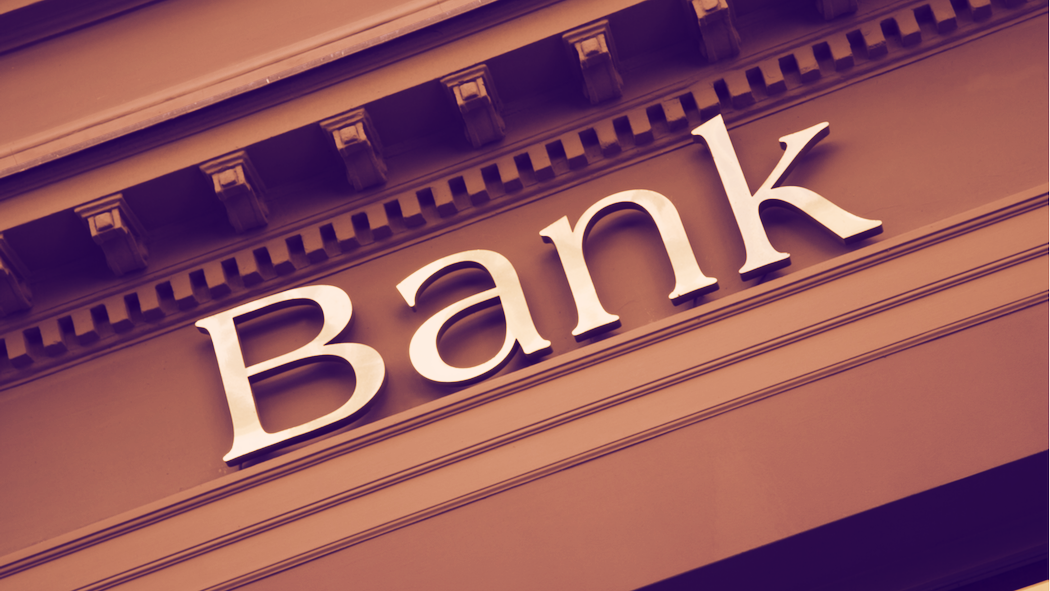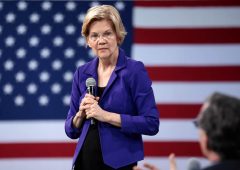Wall Street Banks Post Strong Profits, But Quietly Brace for Turbulence Ahead
16.04.2025 20:00 3 min. read Alexander Stefanov
As trade tensions rise and economic signals grow harder to read, America’s largest banks are posting quarterly results that reflect both resilience and caution.
Behind the strong headline numbers lies a deeper story about shifting sentiment, mounting uncertainty, and quiet preparation for what could be a turbulent year ahead.
Amid a backdrop of market jitters sparked by President Trump’s tariff push, top financial institutions—JPMorgan, Goldman Sachs, Bank of America, Morgan Stanley, and Citigroup—reported solid first-quarter profits. Volatile markets, driven by the initial rollout of tariffs in February and March, delivered an unexpected windfall in trading revenues, which surged 17% to surpass $36 billion. Collectively, the group pulled in $35 billion in profit, marking a notable 13% year-over-year increase.
Consumers, for now, continue to spend, and businesses appear stable, offering some reassurance that the economy hasn’t buckled under early trade pressures. Still, none of the major Wall Street players provided updated earnings forecasts, reflecting a shared unease about what lies ahead—particularly following Trump’s early April tariff escalation, which triggered a steep sell-off in both stocks and bonds after the quarter had closed.
While some analysts expressed surprise at the strength of the results, they cautioned that much of the financial sector’s performance hinges on future policy clarity. Wells Fargo’s Mike Mayo observed that the current economic headwinds could still be weathered—provided the administration moves swiftly to deliver promised regulatory relief for banks.
Yet optimism wasn’t universal. Goldman Sachs chief David Solomon warned that recession risk is growing, while JPMorgan’s Jamie Dimon said he expects significant turbulence, with a downturn looking increasingly likely. In such a scenario, both earnings and share prices could take a hit.
At the same time, voices like Citigroup’s Jane Fraser and Bank of America’s Brian Moynihan struck a more confident tone. Fraser pointed to the enduring strength of the U.S. economy, even in the face of structural shifts. Moynihan, too, highlighted ongoing consumer momentum and corporate profitability, though he admitted the outlook is murky. “Nobody has perfect visibility,” he noted.
The investment banking divisions, surprisingly, didn’t falter. Despite expectations of a slowdown, several firms posted higher revenues in the segment. While some deals have been delayed, Morgan Stanley’s Ted Pick insisted the mood is one of temporary caution rather than long-term retrenchment. “This is a pause—not a collapse,” he said.
Still, actions speak louder than earnings calls. In preparation for potential economic stress, JPMorgan, BofA, Citi, and Wells Fargo set aside $8.4 billion in provisions for possible loan losses—up nearly a third from a year earlier. The message: things are steady now, but no one’s betting on calm waters ahead.
As Ken Leon of CFRA Research put it, “We’re not out of the woods. Things will stay bumpy—and that wears on everyone.”
-
1
Billionaire Slams Meme Stock Hype and Sounds Alarm on U.S. Fiscal Health
15.06.2025 18:00 2 min. read -
2
Robert Kiyosaki Predicts 2025 “Super-Crash,” Urges Hoarding Gold, Silver, and Bitcoin
23.06.2025 13:31 2 min. read -
3
Billionaire Investor Sees Dollar Crash If Key Support Breaks
18.06.2025 15:00 1 min. read -
4
Nassim Taleb Says Global Trust Is Shifting from the Dollar to Gold
22.06.2025 17:00 1 min. read -
5
Geopolitical Shockwaves Hit Ethereum Hard While Bitcoin Stays Resilient
22.06.2025 16:21 1 min. read
What Brian Armstrong’s New Stats Reveal About Institutional Crypto Growth
Coinbase CEO Brian Armstrong has spotlighted a significant acceleration in institutional crypto adoption, driven largely by the surging popularity of exchange-traded funds and increased use of Coinbase Prime among major corporations.
What Will Happen With the Stock Market if Trump Reshapes the Fed?
Jefferies chief market strategist David Zervos believes an upcoming power shift at the Federal Reserve could benefit U.S. equity markets.
U.S. Bank Advises Clients to Drop These Cryptocurrencies
Anchorage Digital, a federally chartered crypto custody bank, is urging its institutional clients to move away from major stablecoins like USDC, Agora USD (AUSD), and Usual USD (USD0), recommending instead a shift to the Global Dollar (USDG) — a stablecoin issued by Paxos and backed by a consortium that includes Anchorage itself.
Vitalik Buterin Warns Digital ID Projects Could End Pseudonymity
Ethereum co-founder Vitalik Buterin has voiced concerns over the rise of zero-knowledge (ZK) digital identity projects, specifically warning that systems like World — formerly Worldcoin and backed by OpenAI’s Sam Altman — could undermine pseudonymity in the digital world.
-
1
Billionaire Slams Meme Stock Hype and Sounds Alarm on U.S. Fiscal Health
15.06.2025 18:00 2 min. read -
2
Robert Kiyosaki Predicts 2025 “Super-Crash,” Urges Hoarding Gold, Silver, and Bitcoin
23.06.2025 13:31 2 min. read -
3
Billionaire Investor Sees Dollar Crash If Key Support Breaks
18.06.2025 15:00 1 min. read -
4
Nassim Taleb Says Global Trust Is Shifting from the Dollar to Gold
22.06.2025 17:00 1 min. read -
5
Geopolitical Shockwaves Hit Ethereum Hard While Bitcoin Stays Resilient
22.06.2025 16:21 1 min. read


